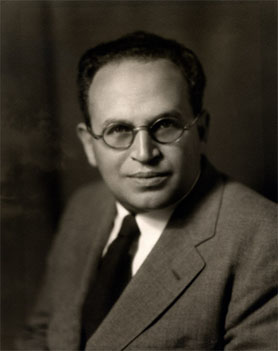Related Research Articles
The digital divide is the unequal access to digital technology, including smartphones, tablets, laptops, and the internet. The digital divide creates a division and inequality around access to information and resources. In the Information Age in which information and communication technologies (ICTs) have eclipsed manufacturing technologies as the basis for world economies and social connectivity, people without access to the Internet and other ICTs are at a socio-economic disadvantage, for they are unable or less able to find and apply for jobs, shop and learn.
The hypodermic needle model is claimed to have been a model of communication in which media consumers were "uniformly controlled by their biologically based 'instincts' and that they react more or less uniformly to whatever 'stimuli' came along".

The two-step flow of communication model says that most people form their opinions under the influence of opinion leaders, who in turn are influenced by the mass media. In contrast to the one-step flow of the hypodermic needle model or magic bullet theory, which holds that people are directly influenced by mass media, according to the two-step flow model, ideas flow from mass media to opinion leaders, and from them to a wider population. Opinion leaders pass on their own interpretation of information in addition to the actual media content.

Social mobility is the movement of individuals, families, households or other categories of people within or between social strata in a society. It is a change in social status relative to one's current social location within a given society. This movement occurs between layers or tiers in an open system of social stratification. Open stratification systems are those in which at least some value is given to achieved status characteristics in a society. The movement can be in a downward or upward direction. Markers for social mobility such as education and class, are used to predict, discuss and learn more about an individual or a group's mobility in society.

Paul Felix Lazarsfeld was an Austrian-American sociologist and mathematician. The founder of Columbia University's Bureau of Applied Social Research, he exerted influence over the techniques and the organization of social research. "It is not so much that he was an American sociologist," one colleague said of him after his death, "as it was that he determined what American sociology would be." Lazarsfeld said that his goal was "to produce Paul Lazarsfelds". He was a founding figure in 20th-century empirical sociology.
Opinion leadership is leadership by an active media user who interprets the meaning of media messages or content for lower-end media users. Typically opinion leaders are held in high esteem by those who accept their opinions. Opinion leadership comes from the theory of two-step flow of communication propounded by Paul Lazarsfeld and Elihu Katz. Significant developers of the opinion leader concept have been Robert K. Merton, C. Wright Mills and Bernard Berelson. This theory is one of several models that try to explain the diffusion of innovations, ideas, or commercial products.
In media studies, mass communication, media psychology, communication theory, and sociology, media influence and themedia effect are topics relating to mass media and media culture's effects on individuals' or audiences' thoughts, attitudes, and behaviors. Through written, televised, or spoken channels, mass media reach large audiences. Mass media's role in shaping modern culture is a central issue for the study of culture.
Audience theory offers explanations of how people encounter media, how they use it, and how it affects them. Although the concept of an audience predates media, most audience theory is concerned with people’s relationship to various forms of media. There is no single theory of audience, but a range of explanatory frameworks. These can be rooted in the social sciences, rhetoric, literary theory, cultural studies, communication studies and network science depending on the phenomena they seek to explain. Audience theories can also be pitched at different levels of analysis ranging from individuals to large masses or networks of people.

Hypergamy is a term used in social science for the act or practice of a person dating or marrying a spouse of higher social status or sexual capital than themselves.
Structural pluralism is "the potential for political competition in communities". The degree of structural pluralism is used to examine how societies are structured, and specifically is a way to explain coverage differences in media markets. Structural pluralism is studied in philosophical, sociological and communication literature.
The knowledge divide is the gap between those who can find, create, manage, process, and disseminate information or knowledge, and those who are impaired in this process. According to a 2005 UNESCO World Report, the rise in the 21st century of a global information society has resulted in the emergence of knowledge as a valuable resource, increasingly determining who has access to power and profit. The rapid dissemination of information on a potentially global scale as a result of new information media and the globally uneven ability to assimilate knowledge and information has resulted in potentially expanding gaps in knowledge between individuals and nations. The digital divide is an extension of the knowledge divide, dividing people who have access to the internet and those who do not. The knowledge divide also represents the inequalities of knowledge among different identities, including but not limited to race, economic status, and gender.

Socioeconomic status (SES) is an economic and sociological combined total measure of a person's work experience and of an individual's or family's access to economic resources and social position in relation to others. When analyzing a family's SES, the household income and the education and occupations of its members are examined, whereas for an individual's SES only their own attributes are assessed. Recently, research has revealed a lesser-recognized attribute of SES as perceived financial stress, as it defines the "balance between income and necessary expenses". Perceived financial stress can be tested by deciphering whether a person at the end of each month has more than enough, just enough, or not enough money or resources. However, SES is more commonly used to depict an economic difference in society as a whole.
Social epidemiology focuses on the patterns in morbidity and mortality rates that emerge as a result of social characteristics. While an individual's lifestyle choices or family history may place him or her at an increased risk for developing certain illnesses, there are social inequalities in health that cannot be explained by individual factors. Variations in health outcomes in the United States are attributed to several social characteristics, such as gender, race, socioeconomic status, the environment, and educational attainment. Inequalities in any or all of these social categories can contribute to health disparities, with some groups placed at an increased risk for acquiring chronic diseases than others.
The racial achievement gap in the United States refers to disparities in educational achievement between differing ethnic/racial groups. It manifests itself in a variety of ways: African-American and Hispanic students are more likely to earn lower grades, score lower on standardized tests, drop out of high school, and they are less likely to enter and complete college than whites, while whites score lower than Asian Americans.
The socioeconomic impact of female education constitutes a significant area of research within international development. Increases in the amount of female education in regions tends to correlate with high levels of development. Some of the effects are related to economic development. Women's education increases the income of women and leads to growth in GDP. Other effects are related to social development. Educating girls leads to a number of social benefits, including many related to women's empowerment.
Memory is one of the brain's most critical functions. It has the infinite ability to store information about events and experiences that occur constantly. Experiences shape the way memories form, so major stressors on socioeconomic status can impact memory development. Socioeconomic status (SES) is a measurement of social standing based on income, education, and other factors. Socioeconomic status can differ cross-culturally, but is also commonly seen within cultures themselves. It influences all spectrums of a child's life, including cognitive development, which is in a crucial and malleable state during early stages of childhood. In Canada, most children grow up in agreeable circumstances, however an unfortunate 8.1% are raised in households that fall into the category of low socioeconomic status. These children are at risk for many disadvantages in life, including deficits in memory processing, as well as problems in language development.
Community structure theory provides a powerful framework for analyzing society's influence on media coverage. It has been identified by Funk and McCombs (2015) as the “conceptual inverse” of agenda-setting, focusing on demographic characteristics of communities shaping news instead of news as a driver of public perception. For example, community structure theory has found repeated links between indicators of vulnerability and favorable coverage of critical US national issues such as immigration reform or universal health care. Further, in cross-national studies comparing national characteristics and reporting on human trafficking, HIV/AIDS treatment access, water handling/contamination, and child labor, media coverage varied significantly with levels of "female empowerment"— female literacy rate, female child life expectancy, and female school life expectancy.
The digital divide in South Korea refers to inequalities between individuals, households, and other groups of different demographic and socioeconomic levels in South Korea in access to information and communication technologies ("ICTs") and in the knowledge and skills needed to effectively use the information gained from connecting.

The digital divide is an economic and social inequality with regard to access to, use of, or impact of information and communication technologies (ICT). Factors causing the divide can vary depending on the country and culture, as can the potential solutions for minimizing or closing the divide.
The digital divide in France refers to inequalities between individuals, households, and other groups of different demographic and socioeconomic levels in France in access to information and communication technologies ("ICTs") and in the knowledge and skills needed to effectively use the information gained from connecting.
References
- ↑ Baran, Stanley J.; Davis, Dennis K. (2021). Mass communication theory: foundations, ferment, and future (8th ed.). New York: Oxford University Press. pp. 291–294. ISBN 978-0-19-094277-9.
- 1 2 3 4 5 6 7 8 Tichenor, P.A.; Donohue, G.A.; Olien, C.N. (1970). "Mass media flow and differential growth in knowledge". Public Opinion Quarterly. 34 (2): 159–170. doi:10.1086/267786.
- ↑ "The Reading Interests and Habits of Adults.William S. Gray , Ruth Munroe". American Journal of Sociology. 35 (3): 521–521. 1929. doi:10.1086/215106. ISSN 0002-9602.
- ↑ Lazarsfeld, Paul Felix (1971). Radio and the printed page. History of broadcasting (Reprint ed.). New York: Arno P. ISBN 978-0-405-03575-3.
- ↑ Star, Shirley A.; Hughes, Helen MacGill (1950). "Report on an Educational Campaign: The Cincinnati Plan for the United Nations". American Journal of Sociology. 55 (4): 389–400. doi:10.1086/220562. ISSN 0002-9602.
- ↑ Rosenberry, Jack; Vicker, Lauren A. (2022). Applied mass communication theory: a guide for media practitioners (3rd ed.). New York: Routledge. pp. 103–106. ISBN 978-0-367-63036-2.
- 1 2 Gaziano, Cecilie (1997). "Forecast 2000: Widening Knowledge Gaps". Journalism & Mass Communication Quarterly. 74 (2): 237–264. doi:10.1177/107769909707400202. ISSN 1077-6990 – via EBSCO.
- ↑ Gaziano, Cecilie (1983). "THE KNOWLEDGE GAP: An Analytical Review of Media Effects". Communication Research. 10 (4): 447–486. doi:10.1177/009365083010004003. ISSN 0093-6502.
- ↑ Hwang, Yoori; Jeong, Se-Hoon (2009). "Revisiting the Knowledge Gap Hypothesis: A Meta-Analysis of Thirty-Five Years of Research". Journalism & Mass Communication Quarterly. 86 (3): 513–532. doi:10.1177/107769900908600304. ISSN 1077-6990.
- 1 2 3 Vogels, Emily A. "Digital divide persists even as Americans with lower incomes make gains in tech adoption". Pew Research Center. Retrieved 2023-12-13.